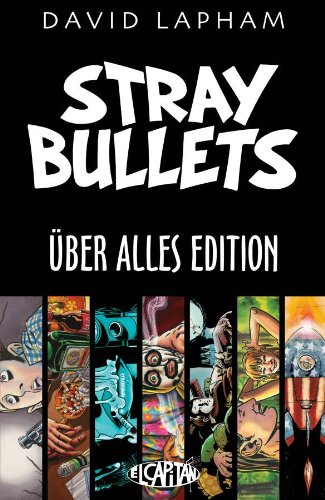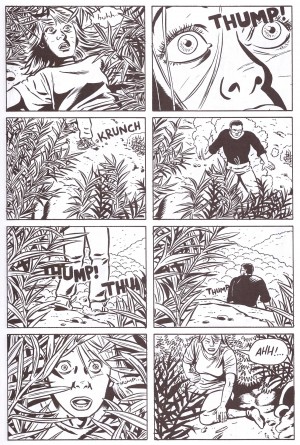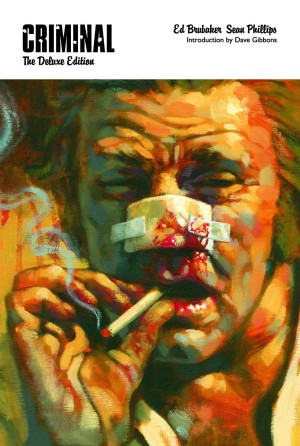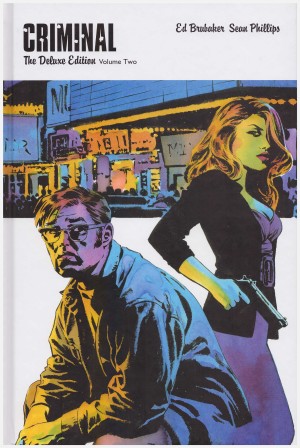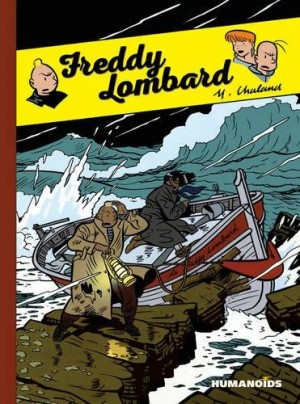Review by Ian Keogh
The short review is that if you’ve never looked into Stray Bullets previously and like well produced crime drama you can’t go wrong with this massive compendium of the series’ first ten years.
Stray Bullets was enthusiastically received when it first appeared in 1996, and time has cemented its reputation as one of the greatest crime comics ever published. That’s because David Lapham was very clever. Yes, crime features heavily, but the success of the series was due to a dramatist’s instinct. There are many episodes when there’s not even any littering, yet what Lapham has by then constructed is so compelling, so twisted, so perverse, the lack of any crimes is immaterial.
Approaching Uber Alles as a novice may be disconcerting as from the start Lapham established a pattern of dotting back and forth through the 1980s (although the opener is the sole tale set during what was then the present day). Go with the flow. Everything becomes clear. Even the whimsical interludes featuring Amy Racecar.
Two characters come to predominate, and whether intentional or not, from start to finish Virginia Applejack can be seen as becoming Beth Kozlonowski. Virginia’s is the only story that plays out pretty well chronologically, five when she first appears, thirteen for most of the book and a self-reliant and resourceful, sixteen by the time it concludes, having packed a lifetime of horror into those years in what’s a tragic story overall. Beth is roughly ten years older, and we see her over several years in the mid-1980s. She’s also very tough and capable, courageous and manipulative. There are only rare occasions when she’s unable to bend a man around her little finger. That pair, however, are only the tip of the iceberg when it comes to an extraordinarily well defined cast, people you come to know very quickly, and that’s visually as well as via their dialogue.
Lapham’s art is stunning from the first page. He rarely departs from a formula of eight panels per page, in effect creating an artistic rhythm, and within that grid he works magic. Lapham wears his influences on his sleeve, but the work is all his own in bringing the characters to vivid life and having them move across the panels without ever looking stiff or forced. Almost every individual panel is notable in some respect, yet they also combine superbly. The sample page was chosen completely at random in complete confidence that it would be representative.
The sheer variety of the content is also fantastic. Stories are set in Baltimore and Los Angeles, but also in the hick town of Seaview. There are finely tuned comedies, gruesome modern day horror pieces, straightforward crime episodes, some romance, and some domestic drama. It’s all there, and in many ways can be seen as a precursor to much admired TV shows like Breaking Bad. Some seriously disturbing subjects are covered, ones not to be trivialised, accorded the proper treatment without ever devolving into voyeurism, and Lapham’s masterful at making us wait. In one of the most harrowing sequences two cast members are abducted and while their fate hangs in the balance Lapham spends two episodes elsewhere, yet despite the desire for closure we’re rapidly drawn into these other circumstances.
Are you more cautious? Or unwilling to drop $50 for a collection? In that case start with Innocence of Nihilism, then work your way through Somewhere Out West, Other People, Dark Days and Hi-Jinks and Derring-Do. Killers isn’t included.
